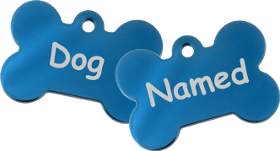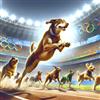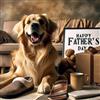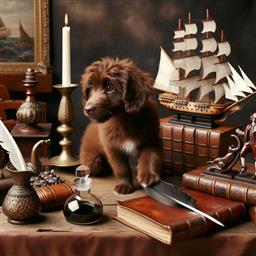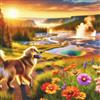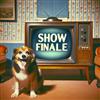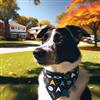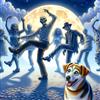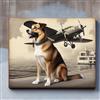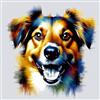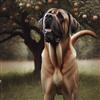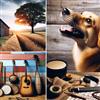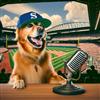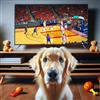1740s Dog Names - Page 2
Updated: June 25, 2024
As we delve into the past, we uncover a fascinating world of history, culture, and yes, even pet names. The 18th century was a time of great change and discovery, a period that greatly influenced our world today. For dog lovers, it also presents a unique opportunity to explore the naming conventions of that era, providing an interesting perspective on how our canine companions were seen and valued.
Our journey takes us to the 1740s, a decade marked by exploration, colonial expansion, and the early rumblings of revolution. In this context, the names given to dogs often reflect the society, culture, and values of the time. Some names were inspired by the popular literature of the day, others reflected the dog's role or its owner's occupation or status. They can also be remarkably personal, providing a glimpse into the unique bond between human and animal that transcends time.
So, if you're searching for a unique and historically-rich name for your four-legged friend, or if you're simply a history enthusiast with a particular interest in the 18th century, this page is for you. Let's journey together back in time and explore the world of canine nomenclature in the 1740s.
| Name | Reason to Choose |
|---|---|
| Gideon | Derived from the Bible, it means 'mighty warrior' |
| Gilbert | Popular in the 18th century, of German origin |
| Godfrey | An old English name popular during the 18th century |
| Gulliver | Popularized by Jonathan Swift's novel 'Gulliver's Travels' |
| Guy | It's a French name, popular in the 18th century |
| Hawthorne | Influenced by the English novelist Nathaniel Hawthorne |
| Hector | A name of Greek origin, denoting 'holding fast' |
| Horace | Influenced by the Roman poet Horace |
| Horatio | Associated with the character from Shakespeare's 'Hamlet' |
| Humphrey | A common name in the 1700s, often used in literature from the period |
| Ignatius | Named after Ignatius Sancho, an influential African writer in 18th century Britain |
| Inigo | Popularized by Inigo Jones, a notable architect of the 17th century |
| Irving | A Scottish name meaning 'green river' |
| Isaac | Another Biblical name, symbolizing laughter |
| Ivor | A Scandinavian origin name, meaning 'archer' |
| Jasper | A classic name from the 18th century, found in various literary works |
| Jefferson | Influenced by Thomas Jefferson, a prominent figure in the 18th century |
| Jeremiah | Named after a prophet in the Old Testament |
| Judson | An English origin name, meaning 'son of Judd' |
| Julius | After the famous Roman emperor Julius Caesar |
| Keats | Named after the British poet John Keats |
| Kelvin | Influenced by Lord Kelvin, a physicist and engineer |
| Kendrick | An English origin name, meaning 'royal power' |
| Kingston | As a tribute to the capital city of Jamaica |
| Kipling | Inspired by Rudyard Kipling, a famous 18th century author |
| Lancelot | Associated with the Arthurian legend, popular in literature |
| Lazarus | A biblical character who was brought back to life by Jesus |
| Leopold | A regal name used by European royalty during the 18th century |
| Linden | Derived from a type of tree, popular in nature names |
| Luther | After Martin Luther, the leader of the Protestant Reformation |
|
Suggest:
|
Submitted!
|
| 1 2 3 4 5 | |
Names inspired by 1740s literature
| Name | Description |
|---|---|
| Boswell | Inspired by James Boswell, a popular writer and biographer of the 18th century |
| Candide | Inspired by the protagonist of Voltaire's satirical novella 'Candide', published in 1759 |
| Clarissa | From the tragic heroine in Samuel Richardson's 'Clarissa', published in the 1740s |
| Cleland | A nod to John Cleland, author of 'Fanny Hill' |
| Defoe | A nod to Daniel Defoe, author of 'Robinson Crusoe', a popular novel of the 18th century |
| Diderot | Inspired by Denis Diderot, a prominent philosopher during 1740s |
| Fanny | A nod to the eponymous character of John Cleland's 'Fanny Hill' published in 1748 |
| Fielding | Inspired by Henry Fielding, author of 'Tom Jones', a popular novel of the 1740s |
| Goldsmith | A tribute to Oliver Goldsmith, a prominent playwright and novelist of the 18th century |
| Hawthorne | A tribute to Nathaniel Hawthorne, a prominent writer of the 18th century |
| Holcroft | A nod to Thomas Holcroft, a popular British dramatist of the 1740s |
| Hume | A nod to David Hume, a prominent philosopher of the Enlightenment era |
| Lovelace | A nod to the villain in Samuel Richardson's 'Clarissa' |
| Montesquieu | A tribute to the French philosopher Montesquieu, a major figure in the Enlightenment |
| Pamela | Inspired by the character in Samuel Richardson's 'Pamela', published in the 1740s |
| Pangloss | A tribute to the optimistic character, Pangloss, in Voltaire's 'Candide' |
| Richardson | A tribute to Samuel Richardson, author of 'Pamela' and 'Clarissa' |
| Rousseau | Inspired by Jean-Jacques Rousseau, a key figure in philosophy during the 1740s |
| Smollett | A tribute to Tobias Smollett, a popular novelist in the 1740s |
| Sterne | A tribute to Laurence Sterne, author of 'Tristram Shandy' |
| Swift | Inspired by Jonathan Swift, author of 'Gulliver's Travels', a popular satire of the 1740s |
| Tristram | Taken from Laurence Sterne's 'The Life and Opinions of Tristram Shandy, Gentleman' published in the late 1740s |
| Volney | Inspired by the French philosopher and historian, Volney |
| Voltaire | A tribute to the author of 'Candide', a prominent figure in the French Enlightenment |
| Yorick | A humorous reference to the fictional character in Sterne's 'Tristram Shandy' |
|
Suggest:
|
Submitted!
|
Names based on inventions of the 1740s
| Name | Description |
|---|---|
| Anders | After Anders Celsius, a prominent scientist of the 1740s |
| Bifocal | Benjamin Franklin also invented bifocal glasses in the 1740s |
| Capacitor | This is in reference to the invention of the Leyden jar, which is a type of capacitor |
| Celsius | In honor of Anders Celsius, who developed his temperature scale in the 1740s |
| Charge | Named after the electrical charge that Leyden jars are capable of storing |
| Coulomb | After the unit of electric charge, named after Charles-Augustin de Coulomb who did pioneering work in the 1740s |
| Discovery | This name celebrates the many scientific discoveries made during the 1740s |
| Engine | A tribute to the critical advancements in steam engine technology during the 1740s |
| Franklin | Named after Benjamin Franklin who invented the lightning rod in the 1740s |
| Glassy | This is a nod to the invention of the glass harmonica |
| Harmonica | In reference to the glass harmonica, an instrument invented in the 1740s |
| Innovator | Named in honor of the many inventors who made significant contributions in the 1740s |
| Invention | A homage to the spirit of innovation that marked the 1740s |
| Jar | A simple name to commemorate the invention of the Leyden Jar |
| Leyden | After the Leyden jar, an early form of a capacitor invented in the 1740s |
| Mercury | Named after the liquid used in many thermometers |
| Pioneer | A nod to the pioneering inventors and their groundbreaking work in the 1740s |
| Rod | This name is derived from the lightning rod invention of the 1740s |
| Scale | A nod to the Celsius scale, widely used in temperature measurements |
| Scope | Named after the thermoscope, an early temperature-measuring device |
| Steam | A tribute to the steam engine advancements made in the 1740s |
| Stove | Inspired by the Franklin stove, invented in the 1740s |
| Temperature | In reference to the thermoscope and Celsius scale, both related to measuring temperature |
| Thermo | Inspired by the thermoscope, a precursor to the modern thermometer |
| Watt | This name honors James Watt who made significant improvements to the steam engine in the 1740s |
|
Suggest:
|
Submitted!
|
Names inspired by notable events in 1740s
| Name | Description |
|---|---|
| Austerlitz | Named after the Battle of Austerlitz, one of the most important and decisive engagements of the War of the Austrian Succession |
| Bach | Johann Sebastian Bach's music was popular during the 1740s |
| Carteret | John Carteret was a significant British political figure during this decade |
| Casanova | The infamous Italian lover, Giacomo Casanova, was active during the 1740s |
| Comet | Great Comet of 1744 was a notable event in the 1740s |
| Culloden | The Battle of Culloden took place in 1746 |
| Derby | 1745 Jacobite rising was also known as 'The Forty-Five', showing allegiance to Charles Edward Stuart |
| Edward | For Charles Edward Stuart, who attempted to regain the British throne for the House of Stuart in 1745 |
| Frederick | Named after Frederick the Great who became king of Prussia in 1740 |
| Gin | The Gin Act of 1743 was passed in London |
| Halley | Halley's Comet was visible in the 1740s |
| Handel | Composer George Frideric Handel was active during this period |
| Havana | The British capture of Havana took place in the 1740s |
| Jacobite | The Jacobite rebellion occurred in the 1740s |
| Jenkins | Due to the War of Jenkins' Ear |
| Jubilee | The Jubilee Riots occurred in England in 1749 |
| Maria | Inspired by Maria Theresa, who became Archduchess of Austria in 1740 |
| Nadir | Named after Nader Shah, who ruled Persia in the 1740s |
| Plague | The Great Plague of 1743 affected Europe |
| Pompadour | Madame de Pompadour was the official chief mistress of Louis XV from 1745 |
| Prussia | Frederick the Great ruled Prussia in this decade |
| Stuart | Charles Edward Stuart led the Jacobite uprising in 1745 |
| Theresa | Maria Theresa began her reign in Austria during this time |
| Walpole | In honor of Sir Robert Walpole, British Prime Minister till 1742 |
| Warburton | For the War of Jenkins' Ear which started in 1739 and continued into the 1740s |
|
Suggest:
|
Submitted!
|
Names based on popular terms from 1740s
| Name | Description |
|---|---|
| Charter | A legal document of significant importance during this period |
| Colony | A term popular in the 1740s to describe the new world territories |
| Enlightenment | Refers to the intellectual and philosophical movement that dominated the world of ideas in Europe |
| Gentry | A term used to describe the upper classes |
| Hessian | Refers to German mercenaries used by the British |
| Intolerable | A term used to describe the British acts leading to the American Revolution |
| Liberty | Liberty was a commonly used term during the 1740s, signifying freedom from oppression |
| Loyalist | This term was used to signify those loyal to the British crown |
| Militia | Relates to the citizen soldiers ready to fight for liberty |
| Minuteman | Used to describe American colonial militia members ready to fight at a minute's notice |
| Musket | A type of firearm used during this era |
| Patriot | Reflecting the growing desire for independence in the 1740s |
| Province | A term used to describe the various territories |
| Quartering | A term referencing the Quartering Act, which required colonists to house British soldiers |
| Rebel | Reflecting the rebellious spirit of the age |
| Redcoat | A term used to describe British soldiers |
| Revolution | This term was frequently used in the days leading to the American Revolution |
| Rider | In reference to the midnight riders who spread the news of the British approach |
| Sloop | A common type of ship in the 1740s |
| Stamp | In reference to the Stamp Act, a significant event leading to the American Revolution |
| Tariff | A common term, reflecting the economic policies of the time |
| Tea | The Boston Tea Party was a significant event during this time |
| Tory | Another term for a Loyalist, used to reflect the political divide of the era |
| Tricorn | A type of hat popular during the period |
| Whig | A political party in England, reflecting the political atmosphere of the period |
|
Suggest:
|
Submitted!
|
Names inspired by famous figures from 1740s
| Name | Description |
|---|---|
| Bach | Named after Johann Sebastian Bach, the famous composer who was actively composing in the 1740s |
| Boucher | Taken from François Boucher, a French painter who was well-known in the 1740s |
| Buffon | Taken from Georges-Louis Leclerc, Comte de Buffon, a French naturalist, mathematician, and author of the 1740s |
| Canova | Antonio Canova, an Italian Neoclassical sculptor, was born in the 1740s |
| Casanova | Giacomo Casanova, an Italian adventurer and author from the Republic of Venice, was a notable figure in the 1740s |
| Chesterfield | Philip Stanhope, the 4th Earl of Chesterfield, was a renowned statesman and man of letters in the 1740s |
| Clive | Named after Robert Clive, a British officer who established the military and political supremacy of the East India Company in Bengal |
| Diderot | Denis Diderot was a French philosopher, art critic, and writer who was a prominent figure in the 1740s |
| Franklin | Inspired by Benjamin Franklin, a prominent figure in the 1740s who is best known for his experiments with electricity |
| Frederick | King Frederick II of Prussia, was a significant figure in the mid-1740s |
| Gainsborough | A tribute to Thomas Gainsborough, a famous English painter of the 1740s |
| George | Derived from King George II of Great Britain who reigned during this era |
| Halle | George Frideric Handel, a German-English composer, was born in Halle, Germany |
| Handel | Inspired by the famous composer George Frideric Handel who was active in the 1740s |
| Hogarth | English painter and printmaker William Hogarth was quite popular in the 1740s |
| Hume | David Hume, a Scottish philosopher and historian, was a prominent figure in the 1740s |
| Maria | Maria Theresa, the only female ruler of the Habsburg dominions and the last of the House of Habsburg, was an influential figure in the 1740s |
| Montesquieu | In honor of the French lawyer and philosopher who was influential in the 1740s |
| Newton | Sir Isaac Newton, an influential scientist, passed away in the early 1740s |
| Pompadour | Madame de Pompadour was the official chief mistress of Louis XV from 1745 to her death |
| Rousseau | Jean-Jacques Rousseau, a philosopher, writer, and composer of the 18th century, started gaining prominence in the 1740s |
| Voltaire | French Enlightenment writer, historian, and philosopher famous in the 1740s |
| Walpole | Horace Walpole, an English writer and politician, was a prominent figure in the 1740s |
| Wilhelmine | Commemorates Wilhelmine of Prussia, a notable figure in the 1740s |
| Wolfgang | Named after Wolfgang Amadeus Mozart, born in the late 1740s, a renowned composer in the classical era |
|
Suggest:
|
Submitted!
|
User Submitted Images
There are currently no user submitted images for this page. This is your opportunity to be the first! Submit your photo below.
User Recommendations
There are currently no name recommendations for this page. This is your opportunity to be the first! Make your recommendation below.
Recently Updated
We would like to take this time to thank all of our visitors that make DogNamed.com the best dog naming resource on the web. Our site would not be where it is today without your suggestions, ratings, and photo submissions. So pat yourselves on the back for a job well done and keep up the good work! If you have any comments, suggestions, or ideas for the this page or any part of our site, don't hesitate to drop us a line on our Contact Page. Thank you! -The DogNamed Team
